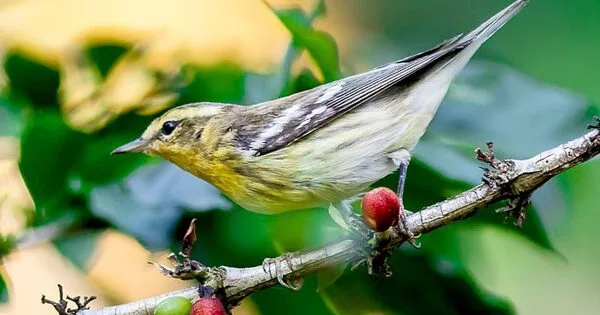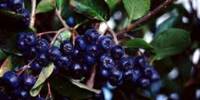Coffee plantations can limit birds’ diets to some extent, depending on how the plantations are managed. Traditional coffee farms with diverse shade trees can actually provide important habitat for many bird species, as the trees provide shelter and food sources such as insects and fruits. However, modern coffee farms that have been converted to sun-grown monocultures with little to no shade can have negative impacts on bird populations.
A new study looks at a record of birds’ diets preserved in their feathers as well as radio tracking of their movements to discover that birds eat far fewer invertebrates in coffee plantations than in forests, implying that disturbance to their ecosystem has a significant impact on the birds’ dietary options.
Consider the spring of 2020, when grocery store shelves were devoid of essential items and ingredients. For birds that live in Central American forests, the conversion of forest land to coffee plantations essentially “clears out the shelves” of their preferred foods, forcing them to change their diets and habitats in order to survive.
A new study led by the University of Utah researchers examines a record of birds’ diets preserved in their feathers and radio tracking of their movements to discover that birds eat far fewer invertebrates in coffee plantations than in forests, implying that disturbance of their ecosystem significantly impacts the birds’ dietary options.
“Growing human ecological impact on the planet, especially via habitat loss and degradation and climate change, often impacts bird diets negatively as well,” said Çağan H. Şekercioğlu, the study’s lead author and an ecology and ornithology professor in the U’s School of Biological Sciences. “These negative changes, including declines in key dietary resources like insects and other invertebrates can lead to reduced survival, especially of rapidly growing young, often leading to population declines and losses of these undernourished birds.”
The study is published in Frontiers of Ecology and Evolution.
Our results suggest that coffee plantations are deficient in invertebrates preferred by forest generalist birds that forage in both native forest remnants and coffee plantations.
Şekercioğlusaid
The forests of Costa Rica
Forests are being reduced from once-verdant havens of life all over the world to much smaller remnants scattered among the agricultural land that has replaced them. Although only about one percent of bird species prefer habitats dominated by humans and human activity, the rapid disappearance of natural forest habitat means that approximately one-third of bird species must now work to survive in human-dominated environments.
In Costa Rica, the land around the Las Cruces Biological Station near the Panama border has been converted from fully forested to 50% coffee plantations, 20% cattle pastures, and 10% other human environments, with only 20% remaining forested. The agricultural areas are drenched in pesticides, fertilizers, and fungicides, drastically impacting the communities of invertebrates on which local birds feed.
Among the local birds studied were four species: orange-billed nightingale-thrush, silver-throated tanager, white-throated thrush, and ochre-bellied flycatcher. All four species are found in both forests and open areas, where they feed on both fruits and invertebrates. However, invertebrates (including insects) are an important part of their diet because they provide important nutrients such as protein and nitrogen.
ekerciolu and his colleagues, who included researchers from the United States, Costa Rica, and Singapore, wanted to know how the bird species they studied obtained nutrients from agricultural and forest environments, particularly during the critical breeding season, when proper nutrition is critical to the species’ survival.

An isotopic food diary
The researchers examined isotopes in the birds’ feathers to learn more about their diet. We are what we eat, and the chemical signatures of the foods we eat are incorporated into our tissues in the form of isotope ratios.
Isotopes are different forms of the same element that differ only in the number of neutrons in their nucleus – an infinitesimal difference in mass between a carbon atom with six neutrons and a carbon atom with seven neutrons, for example. However, biological and physical processes can favor either light or heavy isotopes, causing the resulting ratio to change in a way that can be measured and provide valuable information.
In humans, for example, isotopes in our hair preserve a record of our diets. In a previous study, Thure Cerling, a distinguished professor in the Department of Geology and Geophysics at the University of Utah, and colleagues analyzed hair clippings from barbershops and salons throughout the Salt Lake Valley to learn about the relative ratios of corn-fed meat and plant-based protein in local residents’ diets.
The researchers in Costa Rica hoped to do the same thing, but with the stable carbon and nitrogen isotopes in the birds’ feathers. They collected 170 feathers from four bird species to analyze diet and radio tracked 49 birds to see where they spent their time.
“It’s definitely not the first time feather isotopic analysis has been used to study bird diets,” said co-author Seth Newsome of the University of New Mexico, “but it might be the first time, especially in the tropics, it has been used in conjunction with radio telemetry to examine diet composition and relative use of agricultural versus natural habitats.”
The results showed that the birds’ habitat of choice had a significant effect on their diet. The isotopic data suggested that three of the four species studied ate significantly fewer invertebrates in coffee plantations than in forests. For silver-throated tanagers and the white-throated thrushes, the data suggested that they were eating twice as much invertebrate biomass in forests than in coffee plantations.
“Our results suggest that coffee plantations are deficient in invertebrates preferred by forest generalist birds that forage in both native forest remnants and coffee plantations,” Şekercioğlusaid.
Consequences of habitat shifts
The coffee plantations were established decades ago, and the researchers lack data on how the birds behaved when the forest was still intact. However, based on what we know about the birds’ behaviors now, we can deduce what the results mean for the birds’ lives.
To consume enough invertebrates, the birds must forage frequently in small forest fragments of 7-12 acres (roughly the size of the parking lot at the University’s Rice-Eccles Stadium) and narrow corridors of forests alongside rivers only 30-60 feet wide, according to ekerciolu.
“We think that the more mobile birds like silver-throated tanager and white-throated thrush move constantly to get enough food, especially protein-rich invertebrates,” Şekercioğlu said, a hypothesis supported by a 2007 radio tracking study. “Less mobile species like orange-billed nightingale thrush that can have lifelong home range sizes as small as an acre (half a hectare) either have to adapt to coffee plantations and eat fewer invertebrates or they disappear.” The orange-billed nightingale thrush isn’t alone – a 2019 study showed that more bird species were in decline in the region than were stable.
So, for the birds of Costa Rica and other similar tropical regions, forest reserves can provide critical resources for birds that have shifted their habitats to the remaining forest and travel through coffee plantations to reach other forest fragments.
“These birds shifting their feeding to other places may result in new ecological interactions that can have negative consequences,” ekerciolu said. “For example, increased competition with birds in these new locations, or over predation on a previously underutilized prey species.”
How you can help
If you drink coffee, you can help by purchasing bird-friendly coffee. Bird-friendly coffee, according to ekerciolu, is grown in plantations with more tree cover and forest remnants, which are beneficial to native birds. He suggests purchasing shade-grown coffee, coffee certified as Bird-Friendly by the Smithsonian Migratory Bird Center, or coffee from Ethiopia, which he claims is among the most bird-friendly.
Local governments in tropical regions can also help by prioritizing the conservation of intact forests, secondary-growth forests, and forest strips along rivers to improve the connectivity of forest remnants.
















